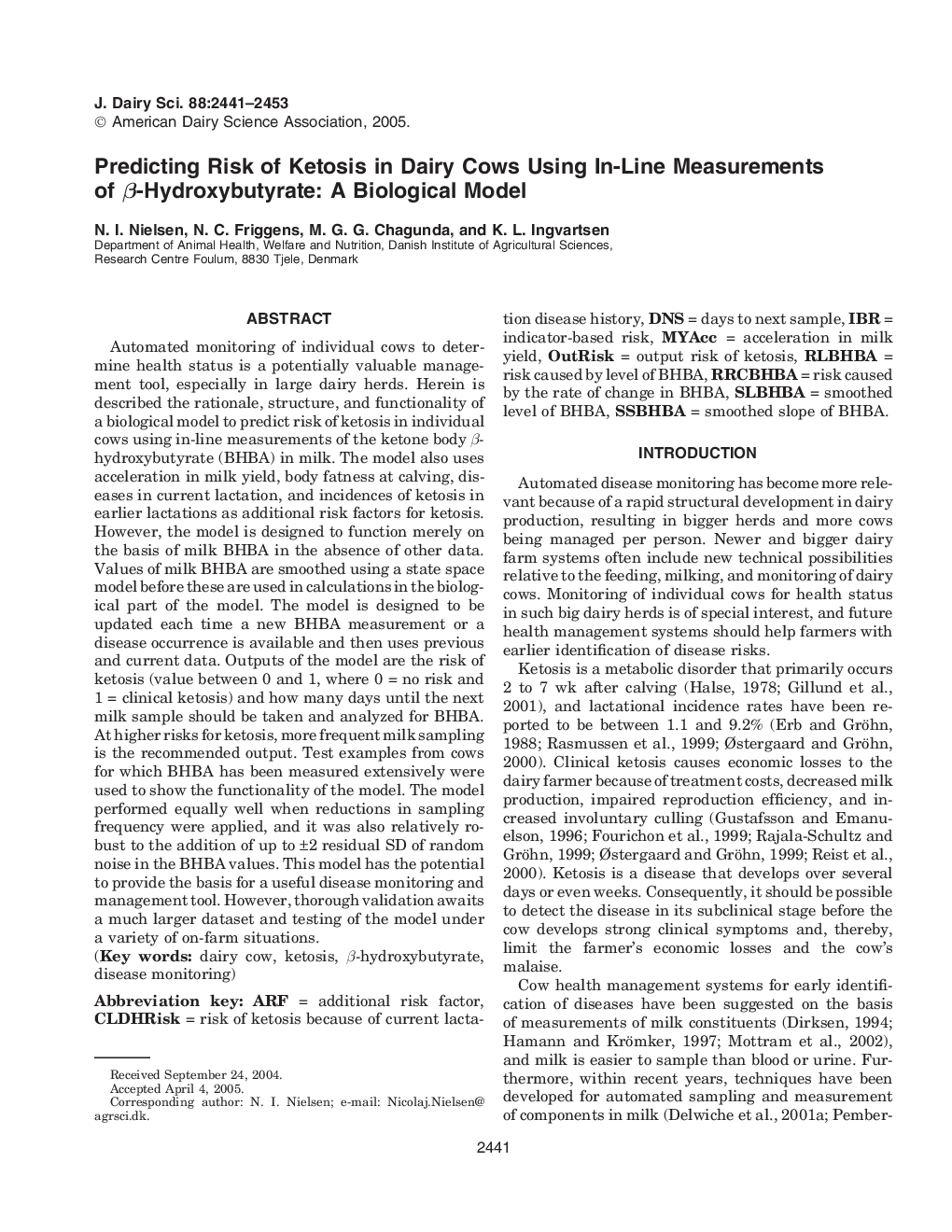| Article ID | Journal | Published Year | Pages | File Type |
|---|---|---|---|---|
| 2442039 | Journal of Dairy Science | 2005 | 13 Pages |
Abstract
Automated monitoring of individual cows to determine health status is a potentially valuable management tool, especially in large dairy herds. Herein is described the rationale, structure, and functionality of a biological model to predict risk of ketosis in individual cows using in-line measurements of the ketone body β-hydroxybutyrate (BHBA) in milk. The model also uses acceleration in milk yield, body fatness at calving, diseases in current lactation, and incidences of ketosis in earlier lactations as additional risk factors for ketosis. However, the model is designed to function merely on the basis of milk BHBA in the absence of other data. Values of milk BHBA are smoothed using a state space model before these are used in calculations in the biological part of the model. The model is designed to be updated each time a new BHBA measurement or a disease occurrence is available and then uses previous and current data. Outputs of the model are the risk of ketosis (value between 0 and 1, where 0 = no risk and 1 = clinical ketosis) and how many days until the next milk sample should be taken and analyzed for BHBA. At higher risks for ketosis, more frequent milk sampling is the recommended output. Test examples from cows for which BHBA has been measured extensively were used to show the functionality of the model. The model performed equally well when reductions in sampling frequency were applied, and it was also relatively robust to the addition of up to ± 2 residual SD of random noise in the BHBA values. This model has the potential to provide the basis for a useful disease monitoring and management tool. However, thorough validation awaits a much larger dataset and testing of the model under a variety of on-farm situations.
Related Topics
Life Sciences
Agricultural and Biological Sciences
Animal Science and Zoology
Authors
N.I. Nielsen, N.C. Friggens, M.G.G. Chagunda, K.L. Ingvartsen,
